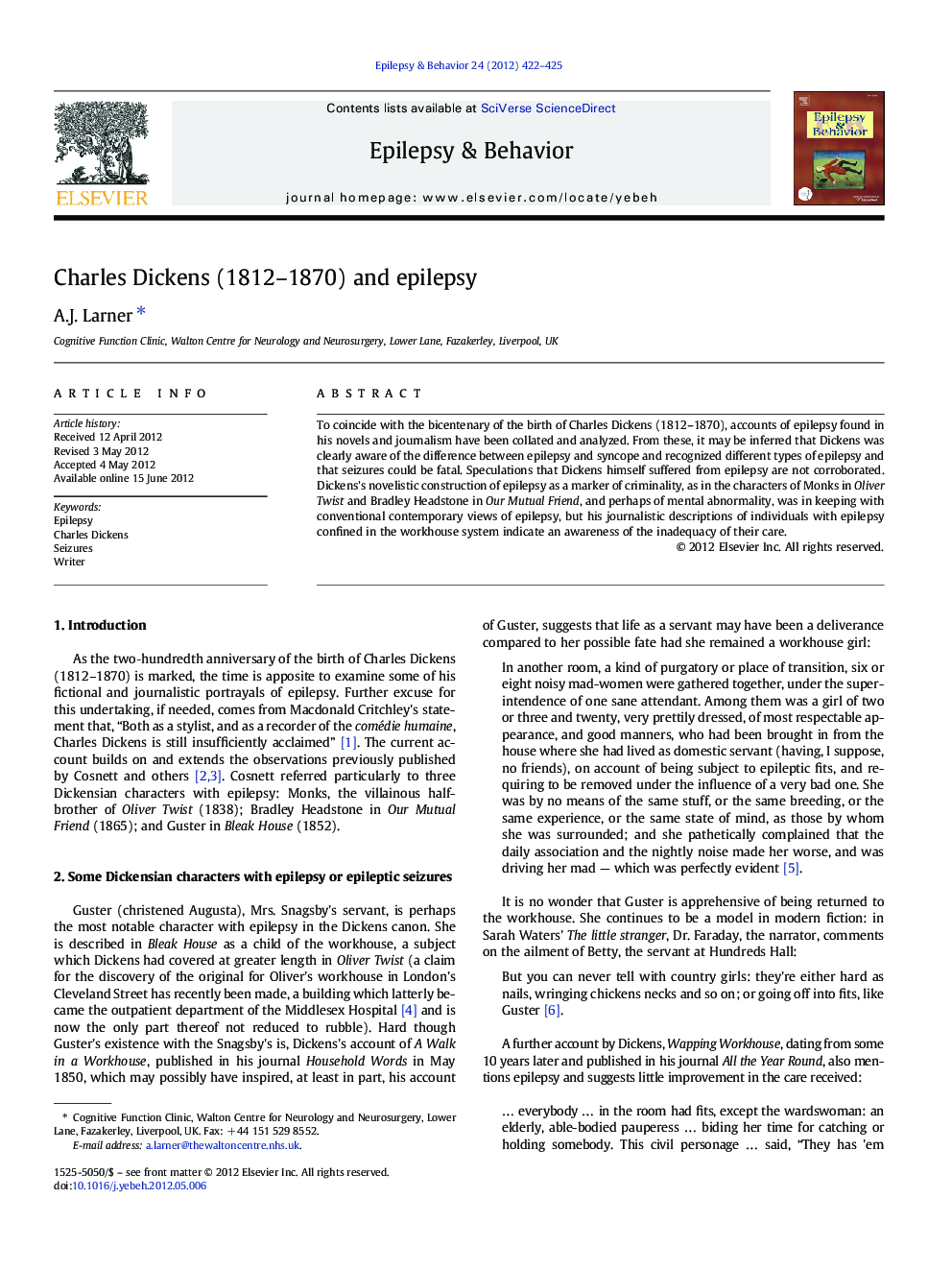| Article ID | Journal | Published Year | Pages | File Type |
|---|---|---|---|---|
| 6013520 | Epilepsy & Behavior | 2012 | 4 Pages |
To coincide with the bicentenary of the birth of Charles Dickens (1812-1870), accounts of epilepsy found in his novels and journalism have been collated and analyzed. From these, it may be inferred that Dickens was clearly aware of the difference between epilepsy and syncope and recognized different types of epilepsy and that seizures could be fatal. Speculations that Dickens himself suffered from epilepsy are not corroborated. Dickens's novelistic construction of epilepsy as a marker of criminality, as in the characters of Monks in Oliver Twist and Bradley Headstone in Our Mutual Friend, and perhaps of mental abnormality, was in keeping with conventional contemporary views of epilepsy, but his journalistic descriptions of individuals with epilepsy confined in the workhouse system indicate an awareness of the inadequacy of their care.
⺠Dickens's occasionally wrote about epilepsy in his novels and journalism. ⺠He was aware of the difference between epilepsy and syncope. ⺠He recognized different types of epilepsy and that seizures could be fatal. ⺠Speculations that Dickens himself suffered from epilepsy are not corroborated.
